Train timetables
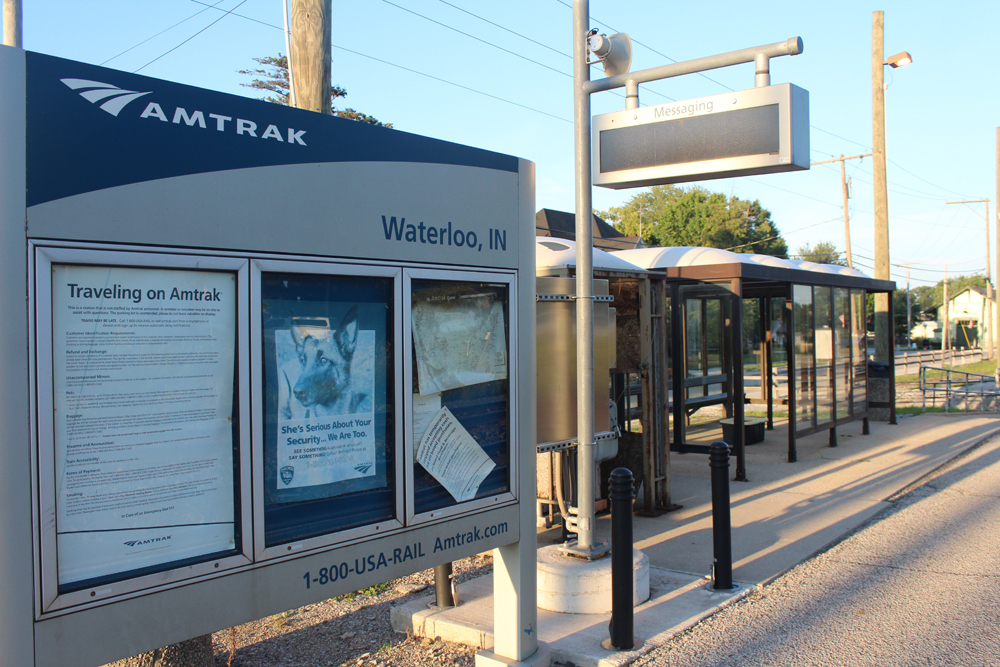
The digital information age has spawned a flurry of welcome advances in rail transportation, such as the convenience of online , ticketing and instantaneous notification of delays. Getting rid of easy-to-access timetables showing stops trains make isn’t one of them. Fortunately, other providers have helped fill the void.
History
From their inception in 1971 and 1978 respectively, both of North America’s passenger rail operators, Amtrak and VIA Rail Canada, published system timetables listing all trains operating on every route. They were continuing a tradition that individual railroads began in earnest in 1883, when uniform time zones were created. For the next 88 years, when hundreds of interconnected rail routes provided essential transportation throughout the continent, timetables showed what times trains arrived and departed from isolated rural stations to bustling connection points.
Each railroad published its own schedule book, which also usually contained fares for coach and first class accommodations that rarely changed. The Official Guide of the Railways, updated monthly, served as an indispensable compendium of all U.S., Canada, and Mexico train schedules, including details such as how many feet or miles apart stations might be in towns served by more than one system.
The big book with the flimsy pages thinned through the 1960s and eventually disappeared.
Why timetables are useful
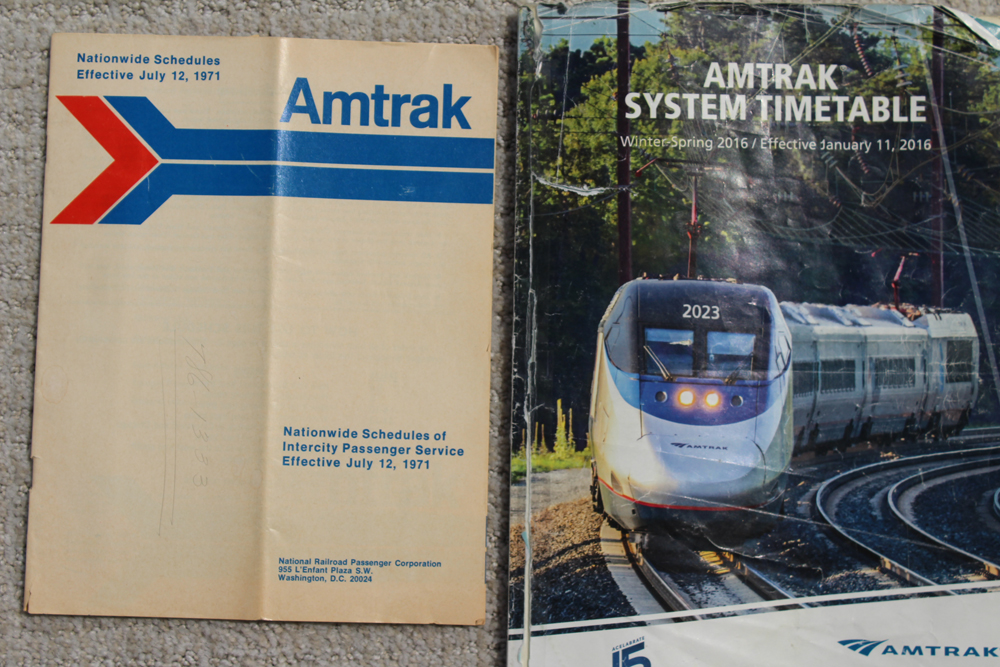
The Guide was no longer needed, because the consolidation of a reduced number of routes in an Amtrak and VIA system timetable provided all the information anyone required to not only plan trips, but also allowed travelers to:
- understand how different routes connected.
- see at a glance which trains were expresses and locals.
- decide at which station to board; addresses and station services were listed.
- determine what stop is next while onboard; the timetable always had a map as well, a feature especially valuable when riding long-distance routes.
- observe posted schedules at stations showing “where trains go and when they leave.”
Sure, passengers were always warned, “times subject to change without notice,” but so what? There was always a phone number to call after tickets were purchased; having basic arrival and departure times determining whether to take the trip at all was more important than such minutia. Amtrak timetables were generally issued at least twice yearly, with print runs in the 300,000 range in later years, though Northeast-Corridor-only schedule printing often more than doubled that.
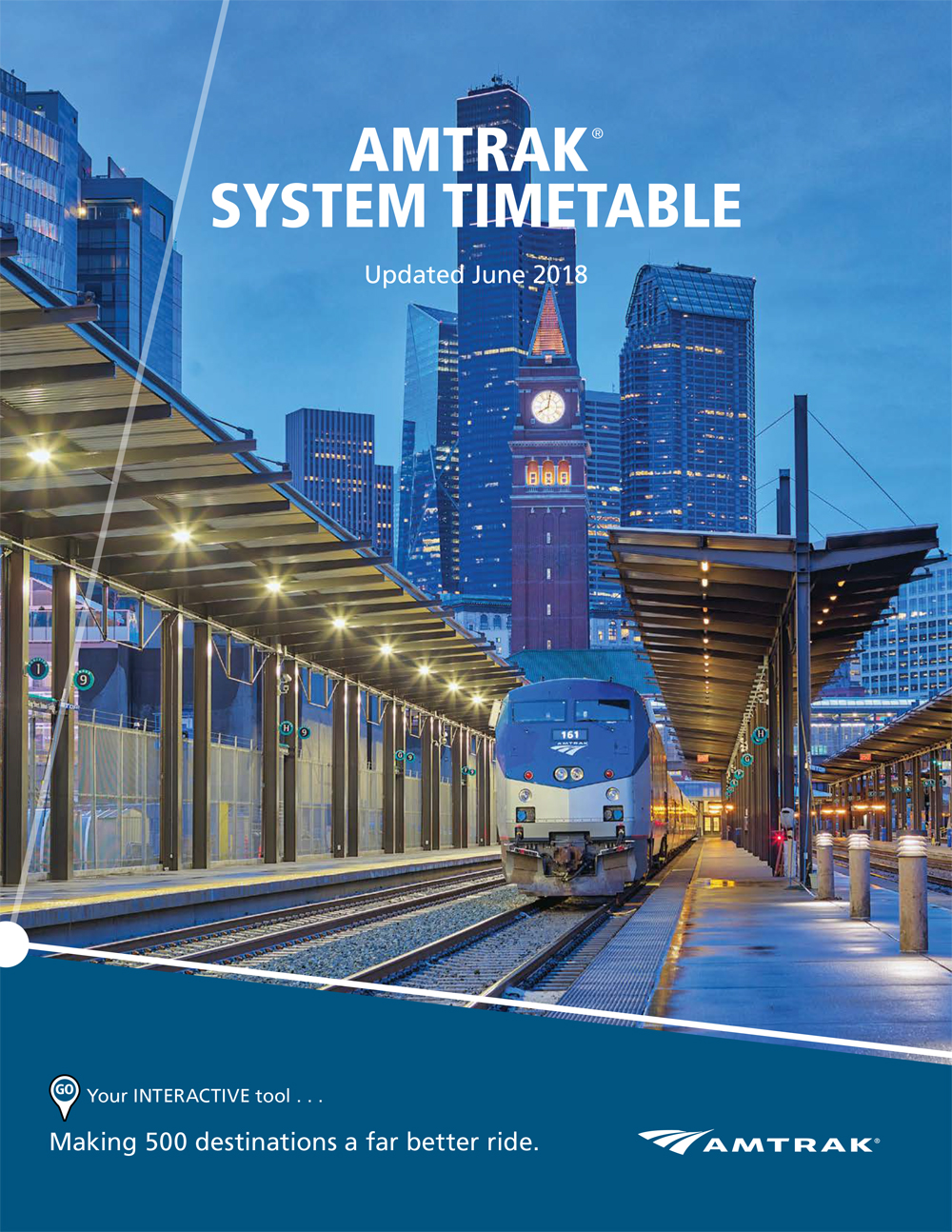
Not needed?
But the cadre of ex-airline managers hired by Amtrak’s board of directors beginning in 2017 had no respect for what they saw to be an outmoded tradition that could easily be supplanted by electronic versions. They had conducted business in the point-to-point airport world. Thus, schedules showing multiple stations and departure times were supplanted by a “do-it-yourself” ordeal which requires potential customers to know the origin and destination to input. Information about intermediate stops or other choices? Executive-suite thinking apparently ranged from “people don’t need that” to “schedules cost too much to revise if there is a change.”
Amtrak last printed a system timetable in 2016, and the company stopped offering a downloadable version after issuing the June 2018 timetable. Schedules made a brief comeback beginning in October 2020 when the reduction of most long-distance trains to tri-weekly frequencies introduced widespread confusion across the system, but those were eventually withdrawn as trains returned to daily operation.
The final VIA Rail Canada system timetable was issued in 2019; schedules were removed with the onset of the COVID-19 pandemic.
Timetables today
Both the Amtrak and VIA Rail Canada websites provide complicated ways to access accurate individual route schedules, which we won’t get into here. But inputting an origin and destination for a selected date on their ticketing platforms will display exact arrival and departure times at fares specific to that train. Once ticketed, passengers should be notified if there is a schedule change.
The sites also offer route maps. The Amtrak map dates from the last 2018 system timetable, so it omits the 2022 extension of the Ethan Allen Express to Burlington, Vt.
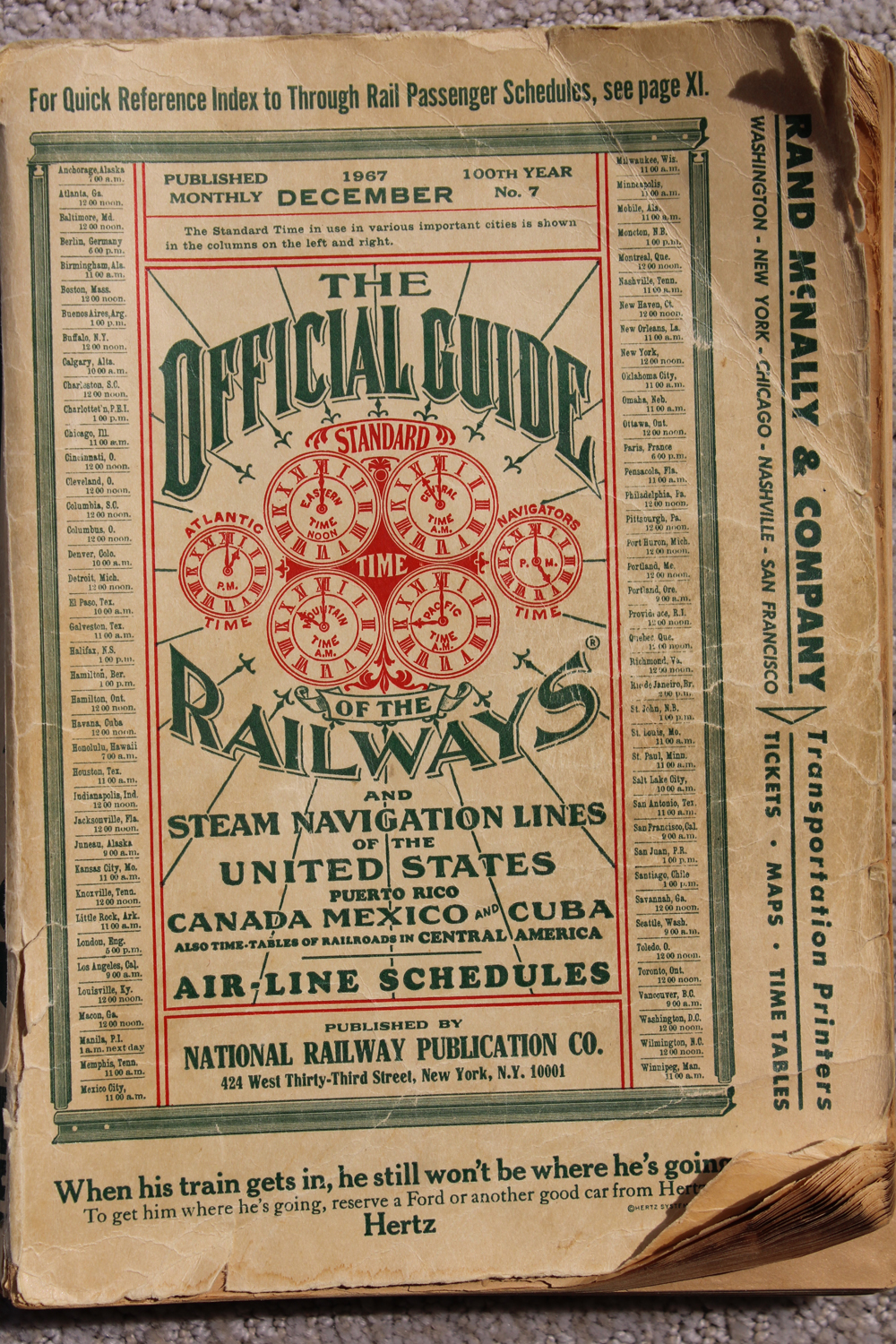
VIA’s map is strictly rudimentary.
However, the Rail Passengers Association website has filled the void with downloadable schedules for most Amtrak and VIA Rail Canada routes.
The Rail Passengers’ collection does require knowledge of where trains operate. The schedules are revised periodically but may not reflect the latest changes. For instance, though an advisory says timetables were updated on April 24, 2024, the grid schedule for Wolverines operating between Chicago and Pontiac, Mich., doesn’t reveal that May 6 through Oct. 17, 2024 (except holidays), trains 350 and 353 are cancelled Monday through Thursday for daytime track construction. This is why the Amtrak and VIA ticketing websites should always be consulted for confirmation.
The RPA site also provides links to state-supported services that still publish their own timetables, often with the kind of useful information previously offered in system timetables. Omitted is the North Carolina site, which shows individual train schedules for the New York-Charlotte, N.C. Carolinian and four Raleigh-Charlotte round trips.
There is, however, a hopeful sign. When Amtrak recently announced the debut of a second train between Chicago and the Twin Cities, the press release did offer a grid listing station times for both the eastbound and westbound Empire Builder and the new Borealis [see “Amtrak to launch Chicago-St. Paul train May 21,” Trains News Wire, May 1, 2024]. The horizontal schedule for the two trains is not in the classic vertical format, but it does show times at all the intermediate stops.
That’s progress!






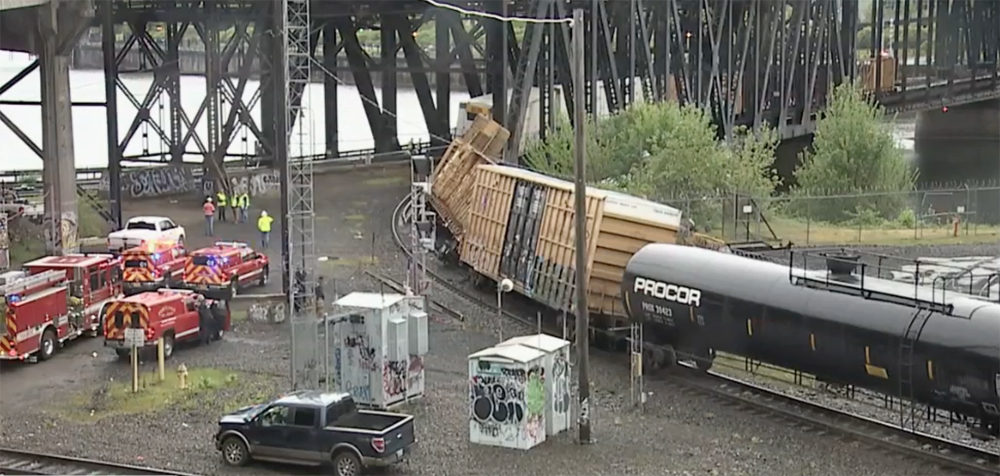
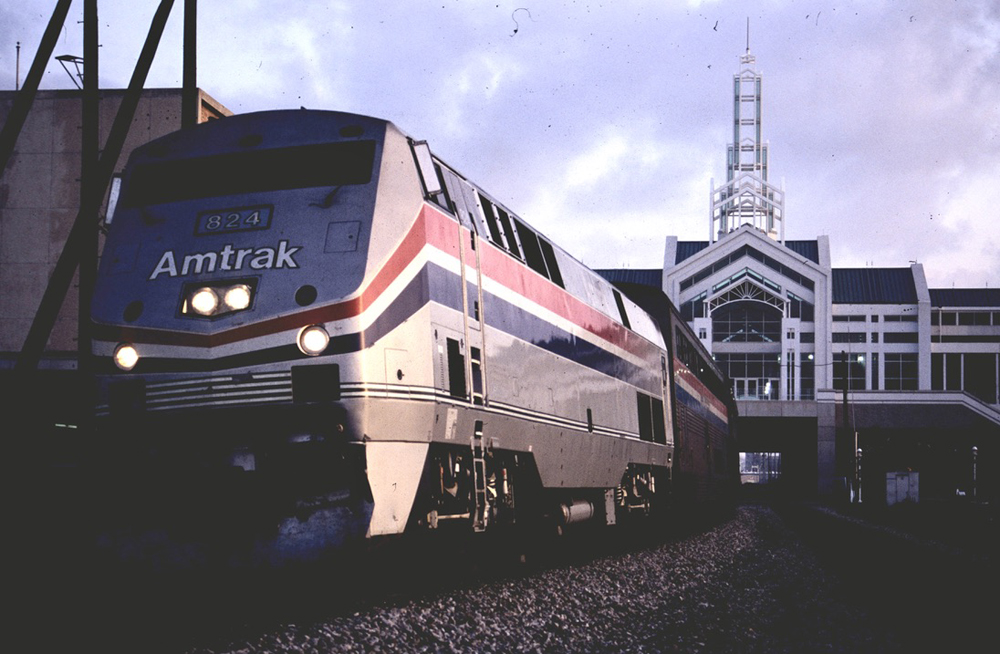






I can see why airlines don’t need timetables. Every traveler knows that flights are available from every major U.S. city to every other major city, so all one needs to do is make a reservation. Amtrak is different. Service is much more limited, and the average non-railfan has no idea whether it’s even possible to take the train from — for instance — New York to Los Angeles or Salt Lake City to San Antonio without going through the mechanics of making a reservation.
Ron Hull,
You summed it up best._
I was surprised to see printed copies of the RPA timetable in my bedroom on the Empire Builder last week.
Very salient article, Bob. I still carry my copy of Amtrak’s last system timetable from 2016 when I travel even though it’s out of date. Speaking of out of date, even RPA’s handy timetables are not necessarily current. Case in point, “California Zephyr” times have not been updated since their revision in March. I have to print out their timetable and make pencil corrections. Admittedly, they’ve got a lot to keep track of (no pun intended).
Freight employees can’t get good lineups…why should passengers fare any better?
A company would sell you timetables. It was the Official Guide and cost $4.00 a copy; $30.00 for an annual subscription in November, 1955.
The Guide also contained airline and steamship schedules. Airline flights were in columnar format, like RR schedules. Planes flew that way. Originated at A, flew to B with pax on and off, then to C and on to the destination of the flight.
And, oh yes: United had service to Ely NV. One flight each way between SLC and SFO.
I keep a copy of the 2016 System Timetable within reach in my office, and another copy tucked in a pocket of my suitcase. My wife and I travel several times a year on Amtrak long distance trips and the timetables are very useful.
Want old Amtrak timetables? Check out statusmaps.com and click on schedules summary. Someone has done a lot of work!
Amtrak is so stupid in not having a printed or pdf timetable, especially when they push the USA RailPass. It is almost impossible to plan a trip. The Rail Passengers Association website is great and easy to use.
Amtrak fails to see timetables as a marketing tool. One filled with schedules, maps, and information about riding a train is not only useful, it could encourage someone to plan a trip. Once on board a timetable can show you what is coming up on your journey, and whether you are on time or not. A route-specific timetable can also provide the traveler with interesting history and highlights. Even for simple trips, such as Washington to Philadelphia, a grid format such as timetables featured, makes it easy at a glance to see when trains operate and how many stops they make , as opposed to scrolling back-and-forth. Selling the product and showing concern for the customer’s convenience should be Amtrak’s priority. Printed timetables, done properly, should help increase revenue, not decrease cost.
I find I no longer use Amtrak; I drove to near Port Clinton PA last week rather than taking Amtrak to Newark or Philly and renting a car for a few days as I once did. TT’s helped; “tell me when you run your trains and I’ll choose one or two.” I DO NOT like carrying around small computers (targets of theft) and trying to read miniscule print on them after using an electronic search engine. (Paper TT’s are manual search engines.)
I used to carry “The Library” in my car with AMTK and commuter TT’s for handy reference, so I can drop off my girlfriend at the Monserrat depot and pick her back up three hours later or so (her office was near North Sta.) so we could do something else in the evening in Gloucester.
Old Official Guides were my nighttime reading for decades; even the June 1970 OG near my feet was still interesting–I longed for that St. Louis-New Orleans sleeper on the IC–even tho’ it was described as being “up for discontinuance”.
I have a good modern story of that sort of thing from 1981 at 30th Street Station concerning the last weekend the Lindenwold-Cape May NJ RDC out Saturday and back Sunday; we were going to take a 3.5 hour bus trip back. But the NJ people had issued a new TT the week before without that Cape May train. It took 25-minutes of free calling around from the station at 5am to confirm that train would run for its last weekend. Since the service would run for only one week the NJ folks had not bothered to show the service. But Lindenwold-Winslow Jct.-Cape May IS shown in RED on my mileage map–I got it in REGULAR service!
Note to Mssrs. Giblin and Landey. James, your grandkids don’t buy tickets on Amtrak and Landey you don’t ride it. You 2 grinches can ride the Hound. The article makes sense.
Johnston is right about the ex-airline execs screwing up Amtrak – not that pAmtrak wasn’t already a dysfunctional mess .
These are the same bozos cancelling trains for an inch of snow. Flown lately?
Airlines are just as messed up.
I hate to disappoint all you paper schedule fans but get over it!!! I have three beautiful grandsons, ages 11, 10 and 5, and all three are fully adept at using every kind of electronic communications device conceivable. They do their homework assignments on Chromebooks furnished by their respective school districts. An all three have their own cell phones. Two of them have PS5 playstations and the third has an Xbox. And remember Amtrak stop direct selling of paper tickets because no one was using the service. Everything is an app with an electronic kiosk, even McDonalds.
Amtrak and VIA have obviously forgotten the KISS formula: Keep It Simple Stupid.
When I leaf through the Official Guide I have in my collection (December 1957) I have to wonder how useful it was. Trains were being discontinued left and right. The only way a ticket seller (say, New Yor Central) could know if a train were running (say, Burlington) would be to call up the other railroad and hope for accurate inofrmation. Even then, selling a ticket more than a few weeks out was a gamble.
Charles, why do you bother? I agree with most of your politics and respect you, but in all the years I can’t think of a single positive post you have ever made to this forum. I may have missed one or two, but you are the absolute champion of negation. I too think that Amtrak is mediocre on a good day, but I still see some benefit. You don’t seem to. P.S. The Official Guide was useful in so many ways that I could write an essay about it.
By 1983 the OG had morphed into an AMTK Guide Book for Travel Agents. I had started stopping my a travel agency (Windsor Travel) on my lunch hour and giving them my AMTK business back in the days when you got an extra month of billing delay. At WT in mid-summer 1983 I suddenly noticed that AMTK had just started allowing booking of sleeper space on excursion tickets to Boston from south of NYP. I gave them a LOT of business Newark-SSta over the next few years–8 nights in 1984 alone. FUN! But ATTENTION—AMTK’s computers would book you on the wrong day’s train leaving Philly at 12:47am THE NEXT DAY’S TRAIN! Humans are better at that sort of thing!
Now, did AMTK consider SELLING the paper TT’s as the Europeans were doing in 1991? Deutsche Reichsbahn was doing that when I travelled around in the former DDR for 15 days.
George, I simply asked a question. How could tickets be sold (pre-Internet) with trains being discontinued left and right in the 1950’s and 1960’s. How did ticket sellers know what trains were still running on connecting railroads? What is negative about asking a simple question?
I own a December 1957 copy of the official guide, given to me by a friend in the 1970’s. (He must have had a duplicate.) I find it extremely useful in tracing historic rail routes. For example last week when I posted about New Haven trains to Pittsfield in the 1960’s. (NYG – Danbury – Pittsfield). But I don’t know how it was possible, using the Official Guide back then, to get up-to-date information on train-offs.
My post says nothing (one way or the other) about current Amtrak printed (or printable) information. So I have no idea why anyone would take it as negative about Amtrak timetables. I didn’t even hint at a position on that subject.
Now, what do I offer that’s positive? I’m a great believer in multiple daily frequencies. I advocate that all the time. Isn’t that positive?
What else have I said positive? I have praised the early-Amtrak Santa Fe trains, couldn’t be better. The fact is that current Amtrak trains on the route don’t measure up. That’s not negative, it’s the truth.
Positive? I seem to recall that just this morning I praised the appointment of Ron Batory to the Amtrak board.
Oh, another thing I’ve said positive: I have praised CSX for its format of Heritage locos. While others posting have been negative that the cab and front end are painting in actual CSX livery and logotype, I’m in favor of it. To me it works just fine.
It is ridiculous that Amtrak doesn’t have traditional printed schedules on their website. I find them very informative and helpful. What would it take for Amtrak to do this? Not much.
It would take an active management team that actually understands what the companies main purpose is and real knowledge of how to fulfill that purpose. Politicians and cost cutters yield what we currently have today at the mess we call Amtrak.